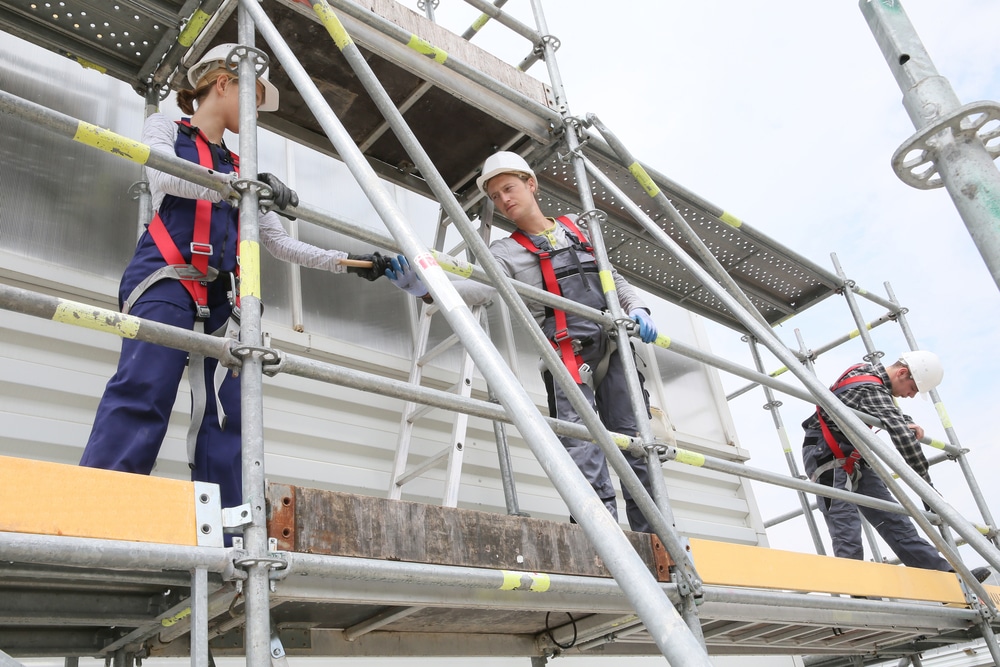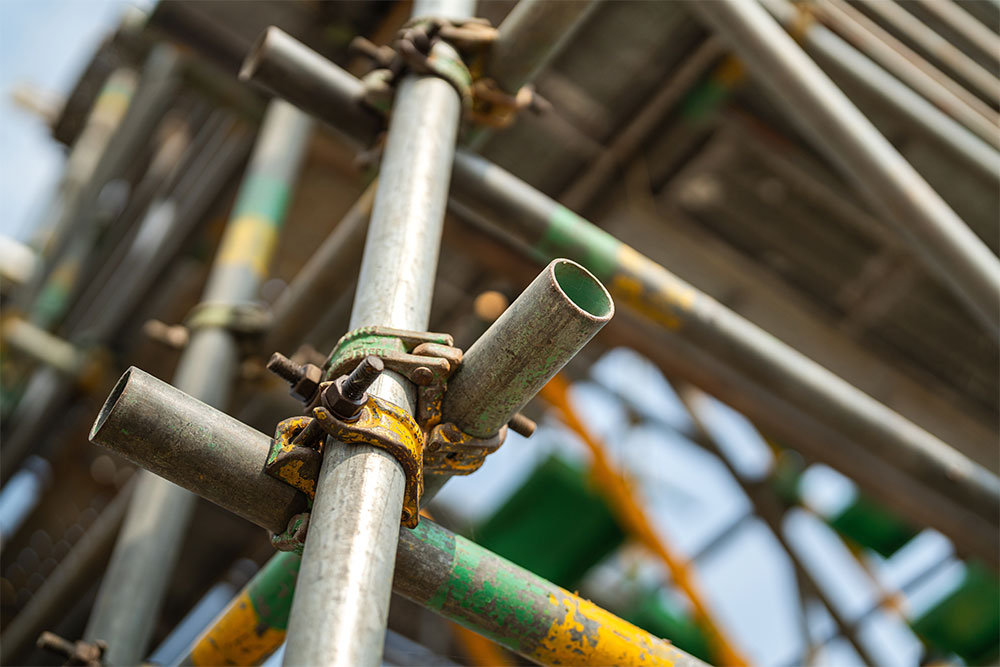Expert Scaffolder Surrey Offering Customized Solutions for Your Needs
Expert Scaffolder Surrey Offering Customized Solutions for Your Needs
Blog Article
Discovering the Various Kinds of Scaffolding Utilized in Construction Jobs
The building and construction market relies heavily on numerous kinds of scaffolding to satisfy particular task requirements, each offering unique advantages and applications. Typical structure scaffolding supplies a durable structure for general tasks, while put on hold scaffolding is essential for work on skyscraper structures.

Typical Structure Scaffolding
Conventional framework scaffolding is among one of the most commonly made use of methods in the construction sector as a result of its robustness and adaptability. This system includes horizontal and vertical frames that are put together to create a steady system for employees and materials. The main elements consist of upright posts, straight ledgers, and diagonal braces, which with each other provide a strong framework that can sustain considerable tons.
One of the essential advantages of typical frame scaffolding is its flexibility to numerous building jobs, varying from household buildings to big commercial structures. The modular style enables for very easy assembly and disassembly, making it reliable for both short-term and long-term jobs. In addition, the system can be personalized in height and size, fitting different building styles and site conditions.
Safety and security is critical in scaffolding applications, and standard structure systems are equipped with guardrails and toe boards to stop falls and make sure worker protection. In addition, normal evaluations and adherence to safety laws are important in maintaining the integrity of the scaffold. Generally, typical frame scaffolding continues to be a fundamental selection in the construction sector, supplying a reliable platform for labor and improving total job effectiveness

Suspended Scaffolding
Suspended scaffolding uses an unique solution for construction projects that require accessibility to raised surfaces, especially in circumstances where conventional framework scaffolding might be unwise. This sort of scaffolding is generally suspended from the roofing or upper degrees of a structure, making use of a system of ropes, platforms, and sheaves to produce a functioning room that can be adjusted to numerous heights.
One of the key benefits of suspended scaffolding is its flexibility. It can be quickly repositioned or decreased to accommodate adjustments in construction requirements, making it ideal for jobs such as window setup, frontage job, and maintenance on skyscraper buildings. In addition, the minimal footprint of suspended scaffolding permits much better use ground area in urban environments, where room is usually restricted.
Safety and security is an essential factor to consider in the usage of suspended scaffolding. On the whole, suspended scaffolding gives a efficient and reliable option for accessing hard-to-reach locations in various construction situations, boosting both performance and safety and security on website.
System Scaffolding
System scaffolding, typically considered a modern service in the scaffolding sector, includes pre-engineered elements that can be swiftly constructed and adapted for numerous building jobs. Scaffolding. This sort of scaffolding is identified by its modular layout, which permits adaptability and effectiveness on job sites, accommodating different elevations and structural demands
Usually made from high-strength steel or aluminum, system scaffolding offers improved resilience and stability. The components consist of upright messages, straight ledgers, and angled braces, which interconnect securely, guaranteeing a durable structure. The design typically includes standard installations, simplifying setting up and disassembly procedures, therefore minimizing labor time and expenses.

Rolling Scaffolding
Rolling scaffolding is a flexible option to traditional set scaffolding, designed for movement and ease of usage on construction websites. This kind of scaffolding includes a platform sustained by frames with wheels, allowing workers to easily transfer it as required. The movement feature substantially boosts productivity, as it decreases downtime related to dismantling and putting together fixed scaffolding.
Commonly created from lightweight products such as aluminum or steel, rolling scaffolding uses a sturdy yet mobile service for projects requiring constant repositioning - Scaffolding. It is especially advantageous in tasks such as painting, drywall installment, and electrical work, where access to various heights and locations is necessary
Safety is extremely important in rolling scaffolding layout, with features such as securing wheels to prevent unintentional motion when in operation, and guardrails to safeguard workers from drops. In addition, many models are flexible in height, fitting visit this website numerous task needs.
Cantilever Scaffolding

The design of cantilever scaffolding commonly involves utilizing braces or arms secured to a building or framework, enabling the platform to prolong external safely. Security is extremely important; therefore, these scaffolds need to be engineered to withstand different tons and environmental problems. Normal assessment and maintenance are essential to guarantee architectural stability and employee security.
Cantilever scaffolding is preferred for its flexibility and reliable use space, making it a preferred selection in city settings where space restrictions prevail. Additionally, it helps with simpler access to high altitudes, eventually adding moved here to the total efficiency of building and construction tasks. As with all scaffolding kinds, correct training and adherence to safety and security requirements are important for workers using cantilever scaffolding.
Conclusion
To conclude, the varied kinds of scaffolding utilized in building jobs each serve distinct functions customized to specific site demands. Standard framework scaffolding offers security, while put on scaffolder cv hold scaffolding provides versatility for elevated jobs. System scaffolding assists in fast setting up, and rolling scaffolding improves mobility for varying job settings. Cantilever scaffolding properly resolves barriers in city settings. Comprehending these scaffolding types is vital for optimizing security and efficiency in building and construction, inevitably adding to the effective conclusion of jobs.
Traditional structure scaffolding offers a sturdy foundation for basic jobs, while suspended scaffolding is crucial for work on skyscraper frameworks.Rolling scaffolding is a flexible option to standard set scaffolding, created for flexibility and ease of use on construction websites. As with all scaffolding kinds, appropriate training and adherence to safety requirements are critical for workers using cantilever scaffolding.
Conventional framework scaffolding provides security, while suspended scaffolding supplies convenience for elevated tasks. System scaffolding assists in quick assembly, and rolling scaffolding boosts mobility for varying job atmospheres.
Report this page